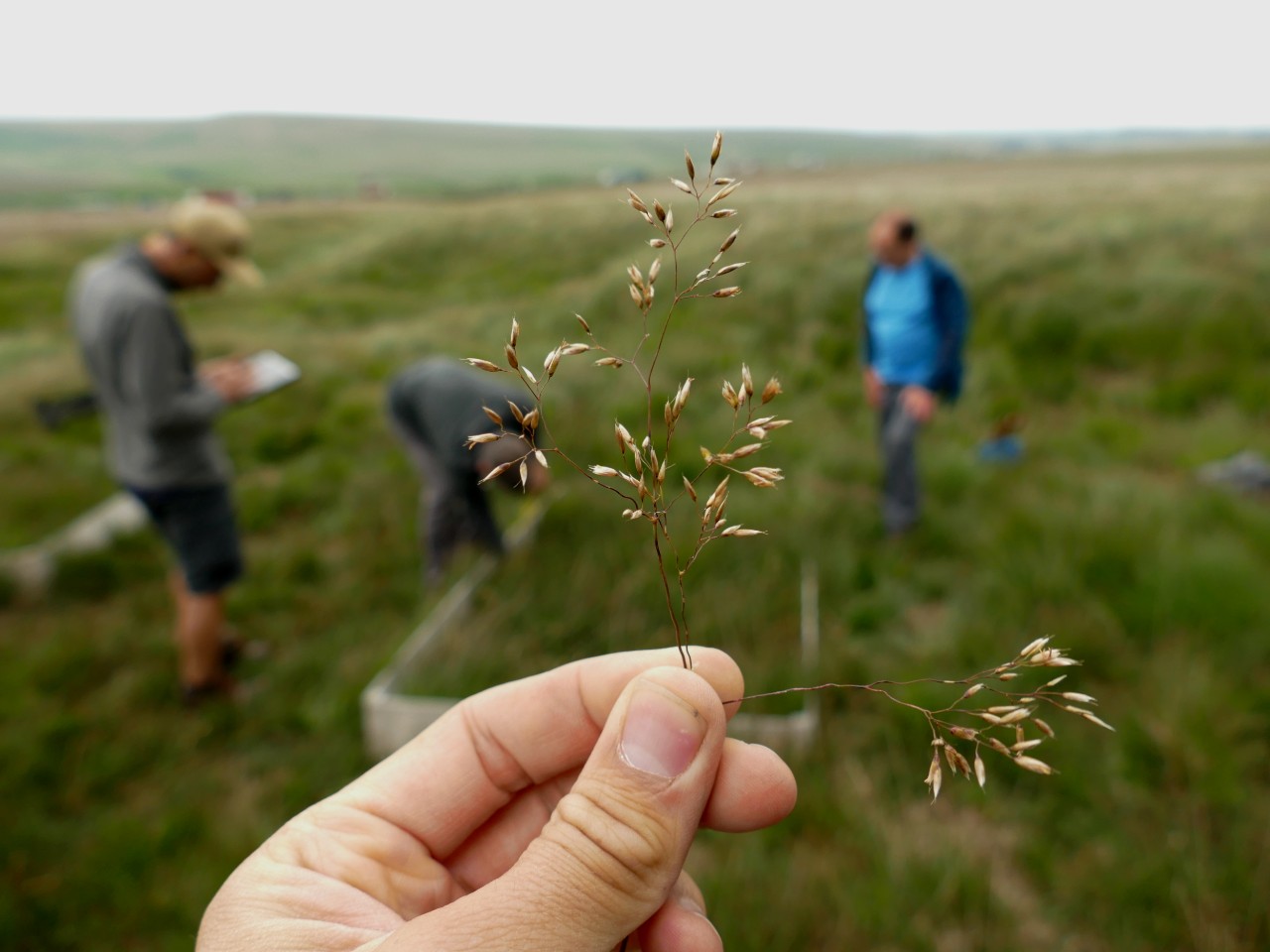The restoration work that Moors for the Future Partnership do on the moors is underpinned by research and monitoring carried out by our team of scientists. Currently, two strands of monitoring, restoration and environmental are underway to best understand the changes to vegetation cover and type over time.

Restoration monitoring started in 2003, and looks at the transition in conservation areas from bare peat to vegetation cover and the mixture of returning species that change over time. We’ve found that the nurse crop grasses (fescue, bent and rye grasses) establish quickly and change the ground cover from 100% bare peat to nearly 100% vegetation in about 3–4 years. This stabilises the previously eroding peat surface and creates a protective microclimate which allows other species to start growing as well. These other, more ‘natural’ blanket bog species (grasses and sedges like wavy hair grass and cotton grass; shrubs like bilberry and heather; mosses and lichens) germinate from seeds mixed up in the heather brash (chopped-up heather which is harvested from other local moors and spread on the bare peat sites to protect the nurse crop grasses as they establish) and also from seeds held in the seedbank in the top layer of the peat (from potentially hundreds of years ago, before the vegetation was lost). After around 4–6 years these ‘indicator’ species overtake the nurse crop grasses, and after 6–8 years the nurse crop grasses have all but disappeared, with approaching 100% cover of blanket bog species. One thing which we have noticed is that sphagnum moss, a key species for the return to healthy blanket bog, does start appearing in some of our quadrats after around 6–8 years, but very slowly, and sometimes not at all. When we plant it deliberately (using plug plants, beads or slime) it grows well in the wetter areas.
Environmental monitoring started in 2014, and looks at sites where there is no restoration work taking place as the moors are in reasonable condition already. At these sites we’re therefore looking at more ‘background’ changes as a result of any changes in climate. These changes, especially when looking at vegetation cover, are much more subtle than what we see in the restoration monitoring, and therefore rely on a long-term dataset, which we’re only at the start of collecting.
All of our vegetation monitoring relies on the hard work and dedication of a large number of volunteers and staff. Counting the % cover of every single species in all of our 612 quadrats is quite a feat – but is providing us with an extremely valuable understanding of how the moors are recovering following our restoration work, and will also provide a detailed account of how the moors may change in response to a changing climate.